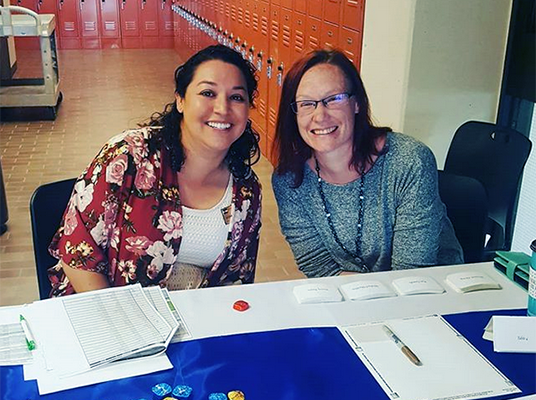Strategic Plan
Strategic Pillars
Serve
- State of Colorado
- Students interested in higher ed
- Their parents
- Financial aid community
- High school counselors
Advocate
- Underrepresented students
- Access
- Change in aid policy
Support
- Provide tools and resources
- Professional development
- Outreach to the community
Engage
- Network with members
- Promote volunteerism
- Strong communication

Goal 1. Increase the value of an individual’s CAFAA membership.
Measures:
- Increase number of institutional members
- Increase number of members listed under each institution
- Increase number of associate members
Strategies:
- Make all of our training events available online to reach members who are located in remote areas of the state or do not have large travel budgets.
- Create more content and tools on the website for financial aid professionals, such as a message board or place where questions can be posted.
- Find and partner with other organizations to get discounts and access to other resources, such as financial wellness tools and training.
- Create a mentorship program or develop method to encourage participation in RMASFAA Leadership Pipeline.
- Create leadership training as part of the annual conference and professional development series.
- Post CAFAA documents, such as minutes, bi-laws, policies and procedures on-line so the membership has insight into the work that is being done by the board.
- Solicit new associate members who can add value and enrichment to the membership.
Goal 2. Strengthen the relationship between high school and financial aid professionals so that more students have access to higher education.
Measures:
- Number of visits to the high school partner section of the CAFAA website
- Increase in number of attendees at outreach events (in-person & online)
- Increase in number of volunteers to participate in outreach events
Strategies:
- Survey high school partners to assess what the needs are.
- Dedicate webpage for high school partners to have easy access to information they need to adequately guide students through the financial aid application process.
- Rethink College Goal Sunday and design more effective outreach efforts.
- Create webinars/videos on how to access aid in Colorado.
- Partner with the Colorado Department of Higher Education to determine best practices for reaching our low-income, underrepresented Colorado families.


Goal 3. To improve volunteerism and build a strong membership to encourage and support and to act as a strong advocate to the populations we serve.
Measures:
- Increase number of volunteers to run for CAFAA board positions
- Increase number of volunteers to serve on CAFAA committees
Strategies:
- Post board position descriptions on the CAFAA website to provide details of what the commitment is for each position.
- Create a volunteer form on the CAFAA website and ask sector representatives to solicit as many forms as they can from their areas.
- Provide a strengths training workshop at the annual conference to help members identify what volunteer opportunities they are best suited for.
- Provide a session at the annual conference where board members can share their experience on the board.
- Sector representatives send personalized emails to new members to invite them to a CAFAA sponsored event or training.
Goal 4. Increase knowledge of how change of federal regulation impacts the state of Colorado.
Measures:
- Increased in-person and on-line sessions/webinars available to memberships
- Increased advocacy
Strategies:
- Legislative review committee to disseminate the information, specifically how it impacts Colorado.
- CAFAA president writes one page legislative priorities for board members who attend the NASFAA leadership conference in Washington D.C. to have available when they do Hill visits.
- Blog posting from board members who attend the NASFAA leadership conference to highlight what they learned.
- In-person forums (with video conferencing available) where members can have discussions about proposed federal legislation.

